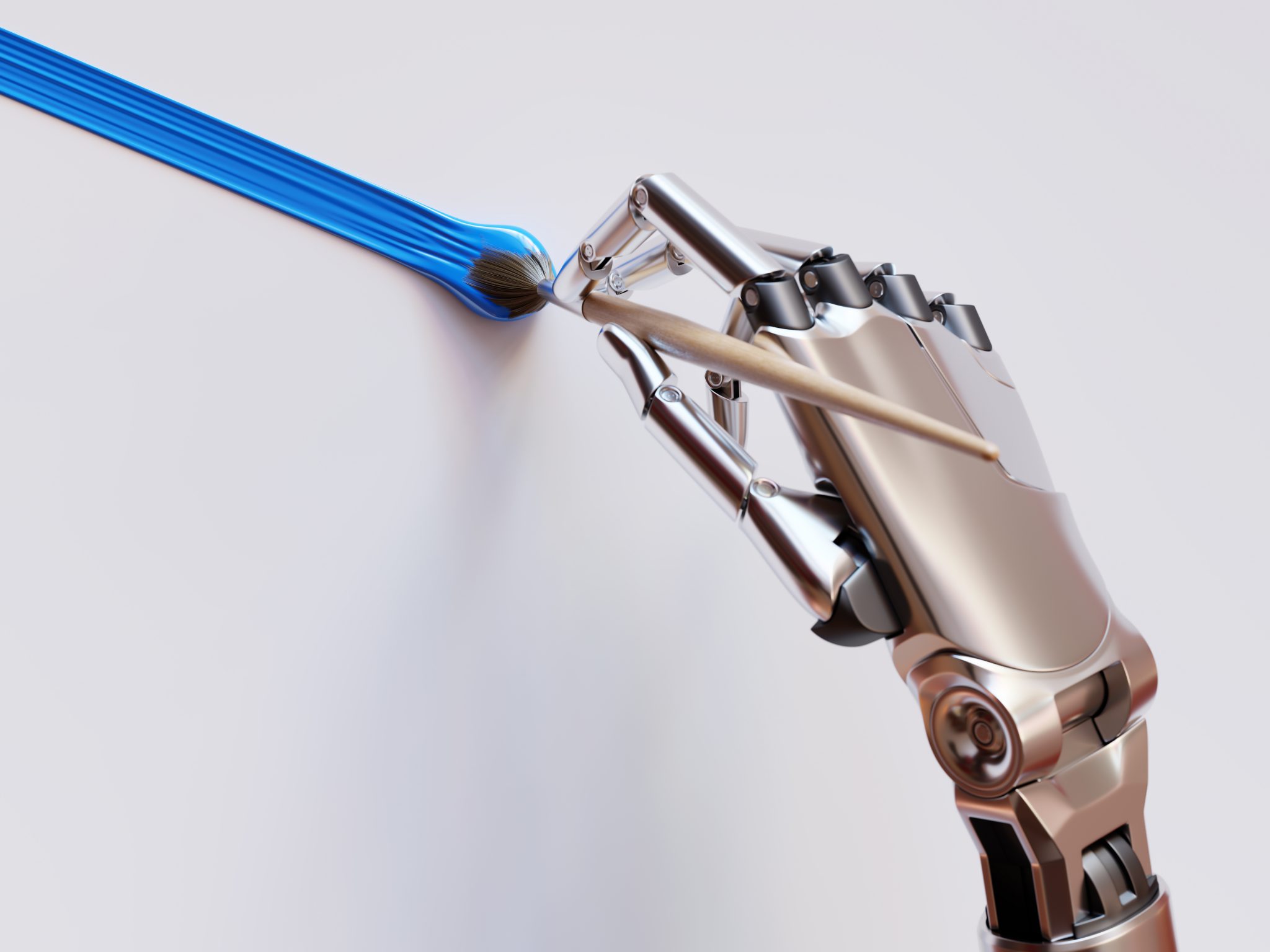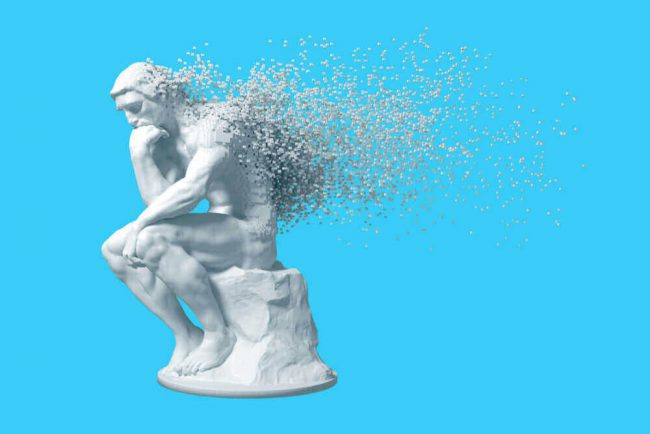Could AI Replace Creatives?
AI has advanced at an unprecedented pace. Already generally accepted to be the ‘fourth industrial revolution’, it has grown to the point where people are starting to wonder whether they could be replaced in their roles by technology. Even those who once thought they were untouchable in the face of the AI revolution will now be asking the question: could AI replace creatives?For Artificial Intelligence, the ability to be creative, to make something out or carry out something imaginative with no real input or direction from a human, looks to be the ultimate aim. But it is also something that many experts are sceptical as to whether it will ever happen.
The fear that jobs originally filled by humans will be replaced by machines, by robots or by AI is hardly a new concept. Factory workers were replaced by assembly machines, craftsmen have been substituted for mechanised mass-production, lawyers have been made redundant by AI, the list goes on. But one sector, and one skill, has always been looked upon as invulnerable from these developments. Creativity has long been thought of as a trait only possessed by humans, and as an ability that machines or AI would never be likely to acquire. However, recent advances have brought us to the point where we can begin to doubt against this concrete point of view. How could AI affect the way you go through creative processes? How could it help you? What’s it capable of now, and could it replace any need to hire creative souls? In this blog, we’re going to discuss AI’s current capabilities in the creative industry, and consider how, as they advance, they will have a part to play in the creative industry.
What can AI do?

The very reason we’re covering this topic is due to the fact that we’ve already seen AI making some inroads into the creative process. For example, back in 2016, IBM’s Watson AI was sat on its binary backside to watch the AI horror/thriller, Morgan. Then, it was tasked with creating the trailer.
The result? Well, see for yourself:
Not too bad, is it? Although it is worth mentioning that Watson did get a little help. The system that helped build the trailer was first subjected to one hundred horror movie ads, analysing each moment within each preview in order to ‘understand’ what scenes belong in a typical horror movie trailer.And Watson, bless his cold, code heart, is not an editor. Although the system selected the scenes to be included in the trailer, the editing, the music, the order of the scenes, they were the result of human creativity.At the end of 2018, a portrait of an Edmond de Belamy was sold for $432,500. Expensive, but the unusual aspect of this painting wasn’t the price tag – it was the artist.
Because the signature in the corner of this painting belongs to an algorithm. It was created by the Parisian group Obviousand their AI interface that they named, a little less personably, as ‘GAN’ (Generative Adversarial Networks). Now here, surely, we have a clear example of an AI responsible for creating a piece of art. As art, it has been validated by its outrageous price tag and the wide acceptance that it just is, apparently, a piece of art. It’s created the work itself, based on what it has learnt before. This is where the sticking point seems to be. Some critics claim that the AI couldn’t have possibly actioned any ‘creativity in this sense, when humans have fed it with thousands of pieces of art, before building the algorithm required to create the new painting. Although the painting itself is a new creation, it is the result of a man-made formula that analyses past, man-made artwork. It seems that, so far, AI is restricted to parameters that are within a kind of human scope. It cannot be truly ‘creative’ if it cannot go beyond the limits set for it by the people who have built it. The algorithm used in GAN ensures that the ‘new’ artwork is essentially a copy of a combination of old works, which generally sees it dismissed as a form of creativity. However, there is at least one clear example of AI exceeding the creative intelligence of a human, when Google’sAlphaGo took on Lee Sedolin a game of Go, an ancient Chinese game that is exponentially more complex than chess. To give you an idea of just how complex it is, consider this…
In chess, there are 20 possible first moves. In Go, there are 32490. In fact, the number of possible outcomes for a single Go game is estimated to be greater than the number of atoms in the observable universe.Because it’s so complex, the game depends hugely upon human intuition and creativity, and computers have, in the past, struggled to beat their flesh and blood counterparts. That’s until AlphaGo came along.AlphaGo was first developed by teaching the ‘deep neural network’, they created to learn Go by feeding it with millions of moves from top Go players. Then, they used a technology called reinforcement learning, which essentially entails the network playing millions of games of Go against itself. Always calculating, always learning, the system would track the best route to success and gradually improve.It was thanks to this method that AlphaGo had the ability to play what is now known as ‘Move 37’. It baffled all onlookers, including Sedol himself, and resulted in AlphaGo sweeping to victory. When Fan Hui, a Go champion in his own right, was asked about the move, he said,“It’s not a human move. I’ve never seen a human play this move. So beautiful. So beautiful.”AlphaGo had outsmarted the race that created it, and shown a level of creativity that couldn’t be matched by a human.So, could we have the basis of a world where AI can be used to creatively solve problems and create art? The story surrounding AlphaGo, initially at least, suggests that the answer is a resounding ‘yes’.But before you start giving up on that dream of becoming the next Charles Dickens or Vincent Van Gogh, it’s only fair to offer some reassurance.
The Limitations of AI
It’s useful to start this section of this blog with a definition of creativity. The Cambridge dictionary says – “the abilityto produce or use original and unusual ideas”.For IBM’s John Smith, their manager of multimedia and vision, creativity involves at least “finding something novel, unexpected, and yet useful.”
So, what does this actually mean for AI in terms of creating art, or for creativity in general? Artists have made use of AI to design paintings or sculptures that are based around existing works.If you were to feed a deep learning application thousands of paintings, you create a mathematical system, that you can essentially tweak to create something new. The basis of the new work is set around parameters set by humans.The question remains, could an AI create without guidance? The example of AlphaGo seems like a step towards this, but the difference between an AI inventing a move in a game and an AI creating a work of art entirely from scratch is significant.In the game Go, the machine has a clear objective: win the game. In creating something beautiful or aesthetic, the AI is required to fulfil a much less specific request. Emotional intelligence and cultural context, a sense of aesthetic and the notion of beauty – these seem purely human traits, right?
According to most experts, we are some way away from developing an AI that could, independently, create something ‘beautiful’, from scratch. Symbolism, metaphor, things so important to art, can’t really be interpreted or implied by the artwork created by an AI. Although there is now an AI that can create art that surprises its designers, it still follows parameters set by past examples of art. It follows trends and patterns in a methodical way. This AI is distinct from the GAN we discussed earlier, and is called a ‘creative adversarial network’ or ‘CAN’. In basic terms, the key difference is that this AI, as opposed to GAN, doesn’t merely copy and combine old works of art to create a new one. CAN anticipates the evolution of art to create something ‘new’ by following the patterns, styles and techniques have taken over time.The patterns may not be perceptible to a human, but an AI necessarily – in order to create something ‘new’ – creates projections that it feels follow logically from the trend art has taken over time.Let’s take a breath.Essentially, at this current moment in time it doesn’t look as if an AI, without an established, concrete goal, can perform creatively. However, this is far from the end of the story when it comes to the introduction of AI in the creative sphere.Let’s take a look at how AI is having an impact on the creative industry today, and how it can realistically affect how you run a business.
AI and Creativity
To reassure you aspiring Shakespeare’s further, it isn’t actually the aim of AI developers to create something that is designed to replace the human creative spirit. You need to regard AI as a tool for increasing and encouraging creativity, rather than a malicious being that exists to snuff out the creative human spark.
In answer to the title of the blog, the answer is, currently at least – no, for two reasons. The first is pretty simple. AI exists to carry out the menial, tedious tasks that distract from the genuinely creative process. Think back to the Morgan trailer.
Whilst Watson, the AI, didn’t actually ‘create’ the trailer per se, it quickly and automatically selected the scenes that it should be made up of. This process, the task of selecting the right scenes for the promotion, can take weeks.Watson distilled it into one day. Think about what that could mean for your business. The boring, repetitive tasks completely eradicated from your daily routine. More time to spend being creative, identifying innovative solutions, becoming a thought-leader.This is part of the reason AI can actually increase human creativity, rather than act as a replacement. In fact,it’s one of the great draws to the Filed platform. Okay, admittedly this is going to be a small plug, but consider all that time you spend optimising and analysing individual ads and ad sets.Wouldn’t it be nice if you could spend that time on something a little more fulfilling? A little more creative? Just some food for thought.
The second line of thought that supports the idea of AI supporting creativity is a little different. It’s a line of thought that suggests AI could help us come up with new, exciting ideas every day. Take GAN and CAN, for example.With CAN, a new, progressive piece of art could help an artistcome up with new concepts quicklyand explore the route it is leading them down. When it comes to GAN, the AI could open up new lines of thought or new styles that a practiced artist could take and study further.This kind of collaboration between AI and creatives is already happening in music. AI platforms analyse chords, tempos, lengths, or any other aspects of a song to create a ‘generic’ track that a musician can build upon and accelerate their own creative process.AI can be used extremely effectively for providing intelligent solutions to complex problems that require real creativity, as proved by AlphaGo.Essentially, you need to consider AI a friend to creative, not a replacement for everyone that considers themselves the tortured artist.
AI is going to permeate its way ever further into the fabric of our society, but fortunately it isn’t in human interest to use it to eradicate creativity in humans. Instead, we want to use it as a tool to encourage the concept of creativity.Those businesses that embrace the possibility that AI can bringthem will see them launched to the forefront of the fourth industrial revolution, those that don’t, might just find themselves left behind.
